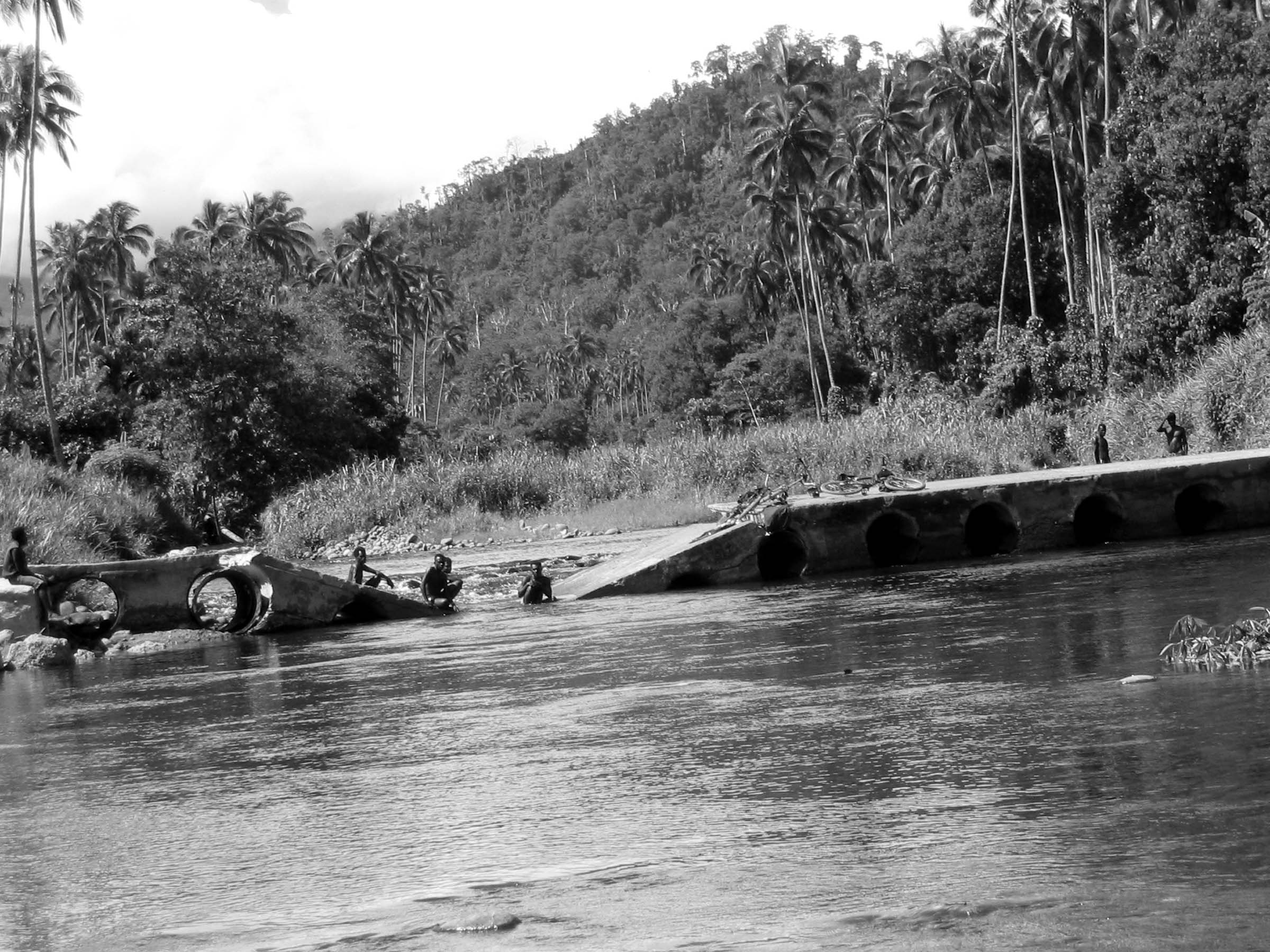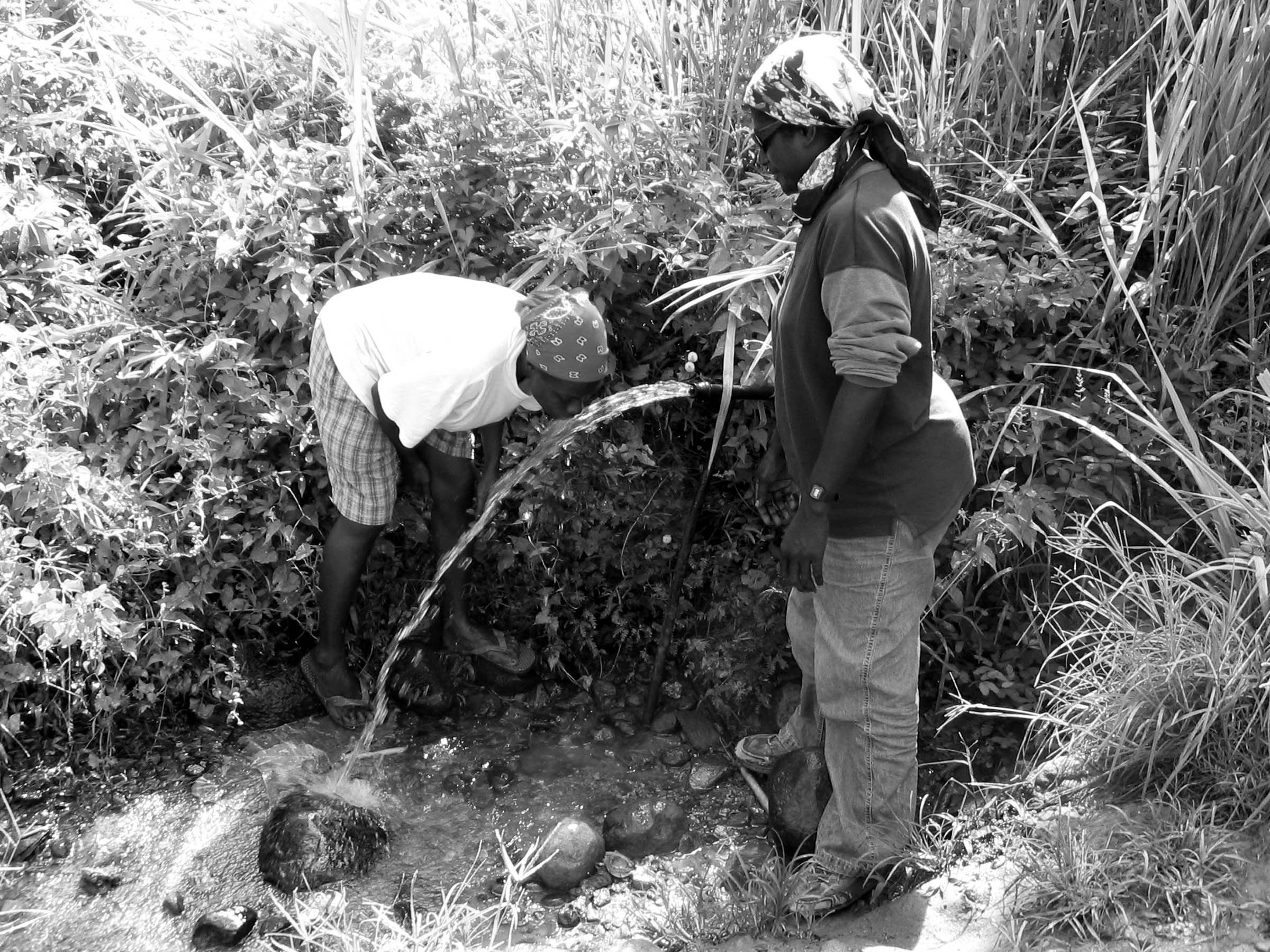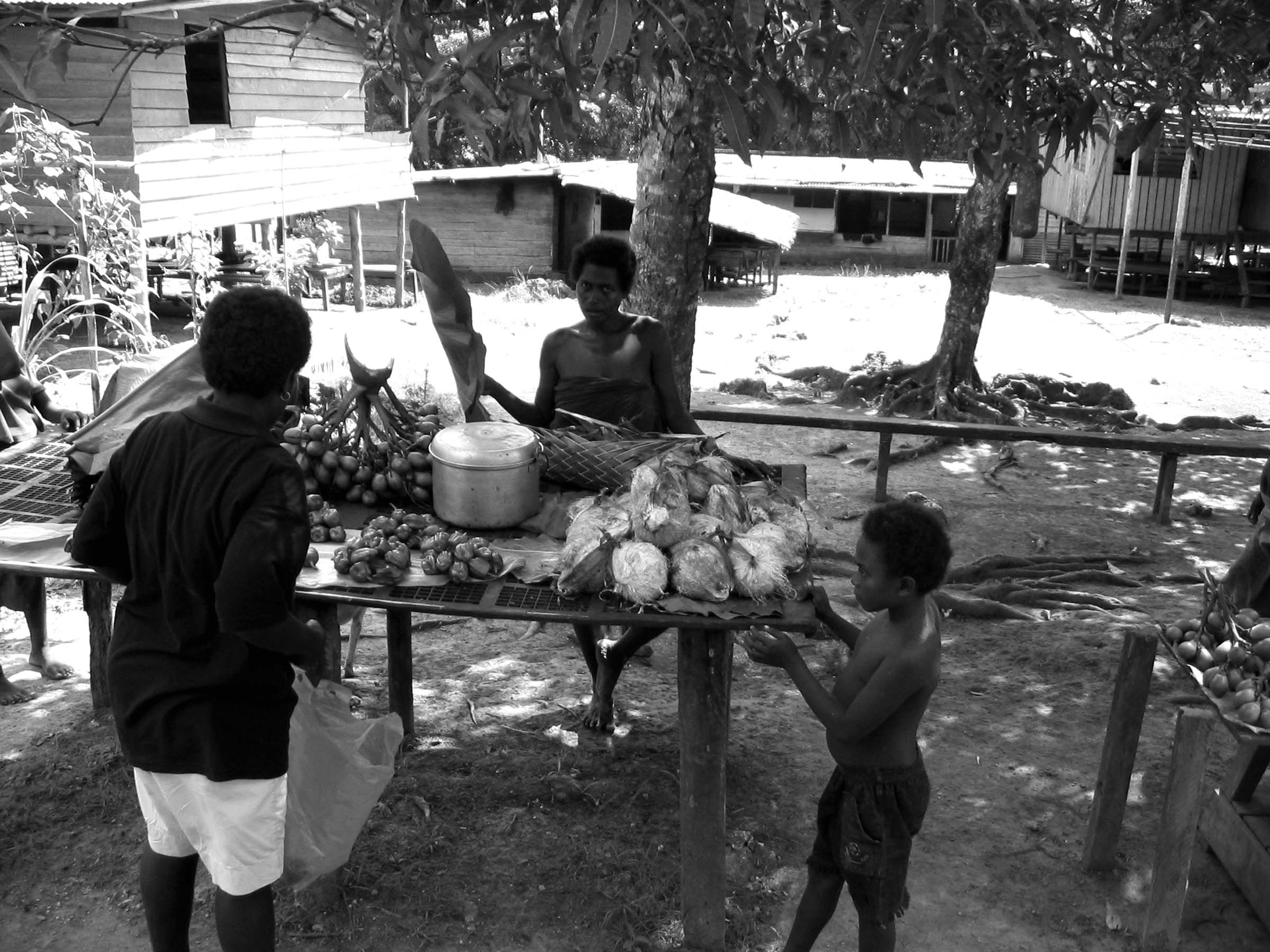
Rubble’s Just the Same but Standing Up Differently
As the world aid groups continue to assist Haiti in the aftermath of its catastrophic earthquake in January 2010, one can easily compare the images of that Caribbean nation’s natural disaster to those of conflict. Broken buildings, death and suffering on the streets. The needs of that poverty-stricken country, mirror everyday realities for war torn societies the world over. The causes may be different between natural disasters and war-stricken nations, but the aftermath of such events are strikingly similar.

Photo by the author.
War and conflict affect people on a global scale, whether it is in Former Yugoslavia, Congo, Rwanda, Colombia, South America, Timor Leste or Sri Lanka. There are no winners in conflict, only losers. Yet those who lose most are the people who hold these societies together— women and children. The impact on women in these areas, especially here in the Asia Pacific region, is the untold story of rebuilding efforts. I have witnessed the aftermath of post-conflict efforts in European and Asia Pacific countries first hand.
In the Asia Pacific region, Bougainville, Sri Lanka and Burma have suffered extensive conflict or exist under military dictatorship. Thousands of people each year die, are injured or go missing due to the war, political regime or brutal conflict. Rape, sexual violence and humiliation of women and families is commonplace. In societies where ethnicity is inherited through the male line, women are raped and forced to bear children as a tool for ethnic cleansing. In some countries, soldiers with HIV/AIDs are sent to rape “enemy” women as a means of genocide. Women in other countries are kidnapped and used as sexual slaves to service troops as well as to cook and carry loads for soldiers.
Sri Lanka, Bougainville, Timor Leste and the Solomon Islands are countries in this region that are now classified as post-conflict areas. The suffering in all these areas, as in other conflict areas globally, has been extensive with families and communities ripped apart by years of bloody warfare.
As a development worker in the Asia Pacific region, I have seen the aftermath in these so-called post-conflict areas. Yet, as a development worker, I have a problem with the term “post conflict” and for a long time, I would avoid using this term, preferring to frame my discussions as working “within the challenges of rebuilding in war-torn societies.” I question how the term “postconflict” could be used when in fact for women and girls, gender-based violence actually increases when the fighting dies down. The risks for women do not end when the war is officially over.
The International Action Network on Small Arms (IANSA) reports that the number of guns in the community increase with returning combatants. The result of this is violent behaviour previously exhibited on the battlefield, now directed against women and other family members. In times of reconstruction, it is the women who rebuild families and communities, and begin the processes of day to day reconstruction. One example of this is seeing women in the market place selling and buying food and goods. In many instances, they trade with those who were once their enemies. They attempt to build stability and structure in an environment where societal norms had broken down.
I question how the term “post-conflict” could be used when in fact for women and girls, gender-based violence actually increases when the fighting dies down.
For many years, I have worked alongside women from conflict-ridden countries as they begin to rebuild their lives, their families and communities. Some had stayed in their countries and fled from their homes into other parts of the country, hiding during the worst of the fighting, while others were forced to leave their countries and many for various reasons, could not return.
What I have witnessed in my work and research as a development worker is that all are strong, capable, resilient, hardworking and inspiring women. For most of these women, there is no “post” to the conflict. Life in the aftermath of war for them is a reality of violence, exploitation, broken families, displacement, loss and grief and yet, many women remain strong, resilient and resourceful.
“Our world was turned upside down,” remarked Josephine Tankunani Sirivi from Bougainville, as we talked a few years ago about life during conflict. “When our lives reached the worst state imaginable living on the run behind the blockade, we had to make some attempts to rally ourselves to survive. Sirivi spoke of her ordeal with a memory that was still fresh. In spite of facing insurmountable odds she never lost her desire to live. “All we had was our land and the natural resources so we built gardens hidden from the PNG defence force in the jungle. We used rice left over from the Japanese in the second world war to grow food – now our people are still producing rice,” she shared.
When rape is used as a weapon of war, it not only strips women of their physical assets, clothing, jewellery, home and animals, but also impacts on their political assets, their standing in the community, their virtue and their reputation. Children who are a result of rape in conflict remain as a physical reminder of war.

Photo by the author.
Bougainville was in conflict with Papua New Guinea (PNG) for nearly a decade over the environmental and social damage that occurred through the Panguna Copper Mine that was owned by Conzinc Rio Tinto. Protests to close the mine led to brutal retaliation. The government, supported by Australia, waged a prolonged and brutal war against the people of Bougainville, with the purpose of re-opening the Panguna mine and to avoid secession.
During the conflict, Bougainville was isolated from the rest of the world behind a military air and sea blockade which prevented medicine, fuel, supplies or humanitarian aid reaching Bougainville. Civilians were forced into an itinerant life, either moving with resistance fighters in their retreat from and pursuit by PNG defence forces, or coerced into crowded government “care centres” where safety and security were lacking, especially for women and girls.
The blockade also prevented foreign journalists or human rights inspectors from reaching Bougainville. It is reported1 that between 1988 and 1997 between 15,000 and 20,000 people, representing about 10 percent of the total population of Bougainville died – the dead were mainly civilians, many of them women and children.
In the case of Bougainville, and other so called post-conflict countries, the mechanisms of state peace-building move faster than the people. The metered timetable of postconflict events, surrendering of arms, reconciliation ceremonies, the setting in place of new leadership is measured and accounted for in the building of a new nation. But in the meantime, the real peace-building and reconciliation still needs to occur on an individual and community basis.
What is common, however, is that conflict opens up and creates spaces for women to move into. For those left behind to care for families while the men are away fighting, conflict creates a shift in gender roles, allowing potential for later structural and social transformation.
When rape is used as a weapon of war, this not only strips women of their physical assets, clothing, jewellery, home and animals, but also impacts on their political assets, their standing in the community, their virtue and their reputation. Children who are a result of rape in conflict remain as a physical reminder of war. Issues of trust, fear and shame interplay with ongoing violence against women in post-conflict reconstruction.
Women who for the duration of the conflict stepped out of traditional roles are expected to return to “women’s work”. The food gardens need to be re-established, education and health services need to be restored. Women who have lost husbands, fathers and sons and are now heads of households have to tackle new challenges. In the aftermath of war, just as in the aftermath of natural disaster, the work has to be done at the physical and the psychological level.
Time and long-term integrated programmes are needed to support women and girls through the aftermath of war. Emergency aid providing immediate relief clashes with longer-term development aid plans as organisations work to their own mandate and budget. Resources that were scarce during the conflict become even scarcer as the emphasis shifts from supporting each other to building a community.
In some countries such as Timor Leste, state mechanisms have been supported, the Office for the Promotion of Equality(OPE) received bilateral and multilateral support, particularly from Ireland Aid, United Nations (UNFPA) and UN Fund for Women (UNIFEM). Electoral laws for the provision of seats specifically for women have also arisen. While it could be argued that these gains are due to the influence of UN Security Council Resolution 1325 (2000) which states that “peace is inextricably linked to equality between women and men.... maintaining and promoting peace and security requires equal participation in decision-making” it could also be argued that women are once more active agents in bringing about social change.
When worlds turn upside down, it is women and girls who make sense of the present realities and who can shape the new direction of their communities and country.
It is well-known that women experience armed conflict in multiple and diverse ways, and women experience war differently to men. Some women take up arms and join the fighting, while others deal with the conflict in different ways. What is common, however, is that conflict opens up and creates spaces for women to move into. For those left behind to care for families while the men are away fighting, conflict creates a shift in gender roles, allowing potential for later structural and social transformation. Negotiation skills refine as women struggle to gain valuable resources. War and the experiences of conflict not only create barriers for empowerment of women, but can also create opportunities for women to transform their lives and to live independently.

Photo by the author.
Post-conflict situations can provide a unique opportunity to introduce a more inclusive political framework to advance women’s participation in country building and democracy. Often this is overlooked by development agencies, who concentrate on the social and economical aspects of providing aid and fall back on the civil and political provision of support for women to participate in the structural rebuilding of their countries.
Lessons are being learned from Rwanda, Burundi, Mozambique, South Africa and Timor Leste who have all integrated female participation into post conflict reconstruction. This female participation is shown by the high return of women in elections and, women taking up political leadership roles.
In fact, in 2009, Rwanda was ranked 1st by the Inter Parliamentary Union (IPU) with a female participation percentage of 56.3. This acknowledges and places women’s role in peace building and governance as high on the agenda. Action not rhetoric is what is needed in so called post-conflict reconstruction.
Haiti, which is overcoming a catastrophic natural disaster will have to take a similar route in their road to recovery. Aid agencies will have to grapple with the integration of women in post natural disaster reconstruction, just as they do with conflict affected areas. When worlds turn upside down, it is women and girls who make sense of the present realities and who can shape the new direction of their communities and country.
Endnotes
1 Scholasticca Raren Miriori (2004) ‘European Solidarity’ in “as Mothers of the Land” eds Josephine Tankunani Sirivi and Marilyn Taleo Havini.





 The
The 
 Isis Resource Center holds one of the largest feminist collections of materials in the Global South. With 40 years of publication experience, Isis holds a vast collection.
Isis Resource Center holds one of the largest feminist collections of materials in the Global South. With 40 years of publication experience, Isis holds a vast collection.